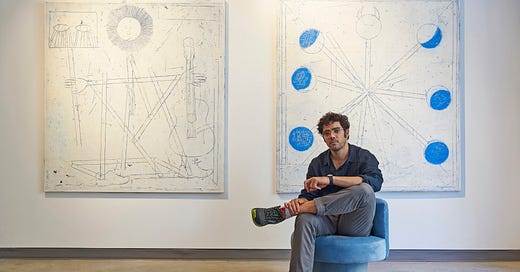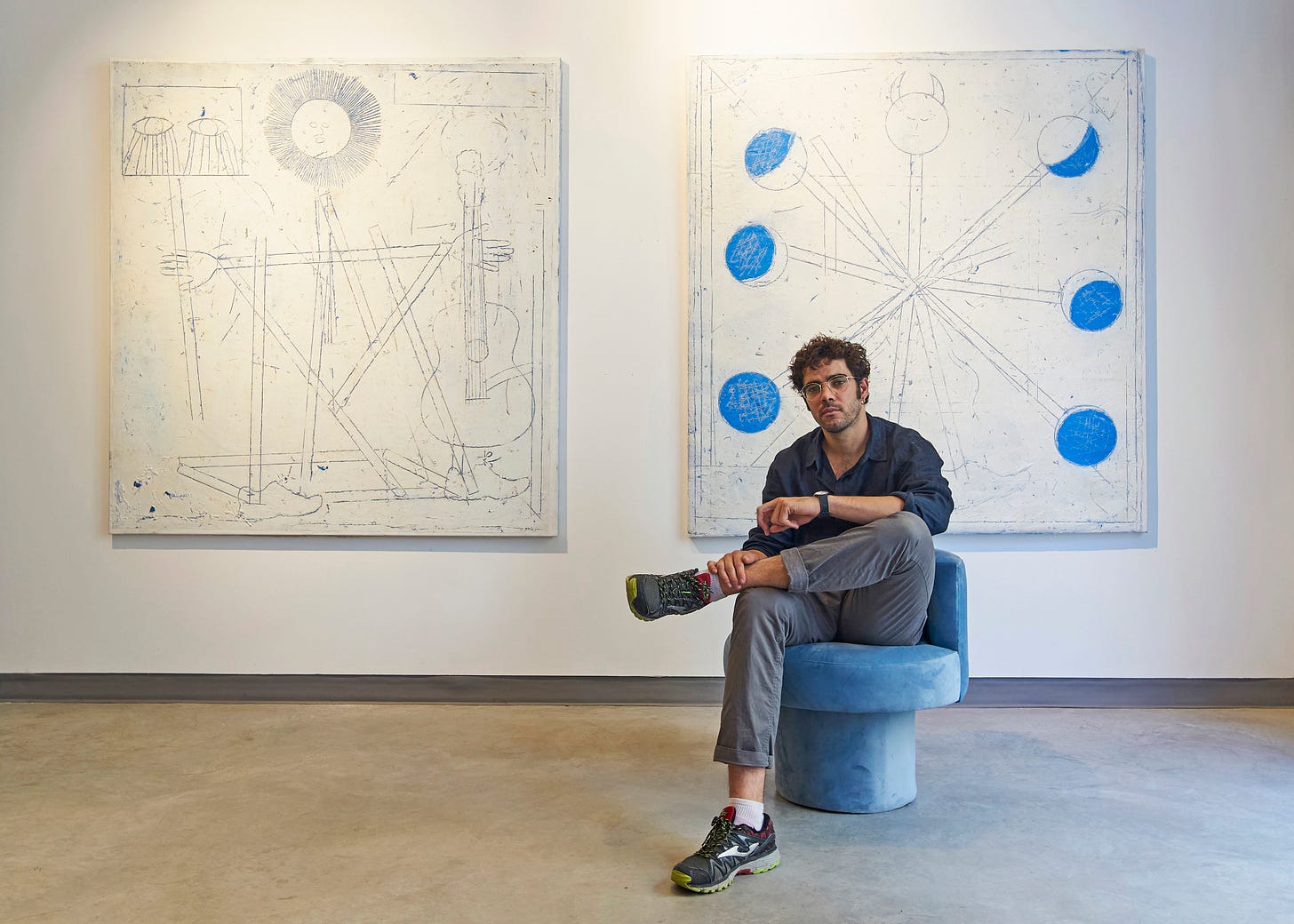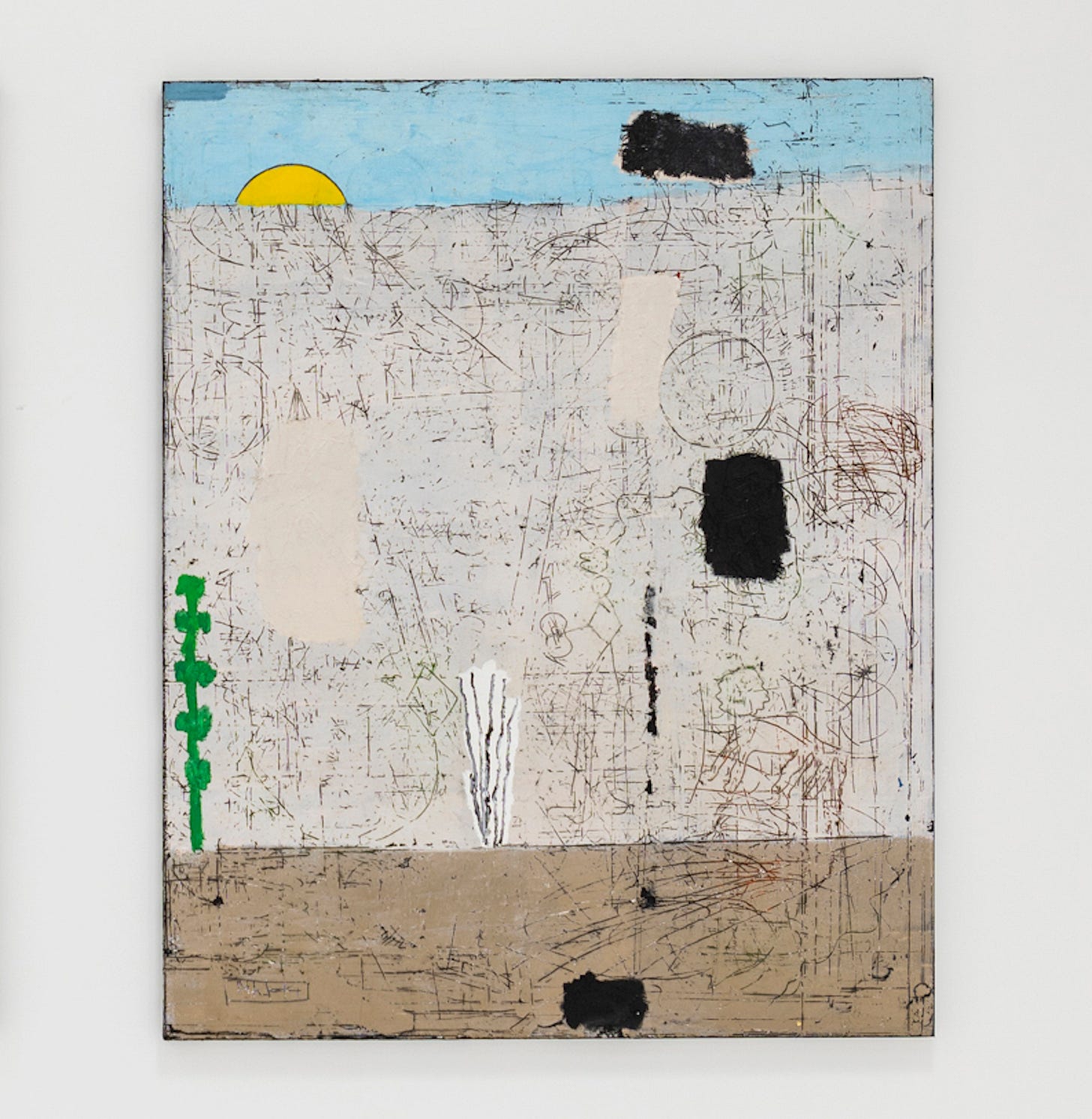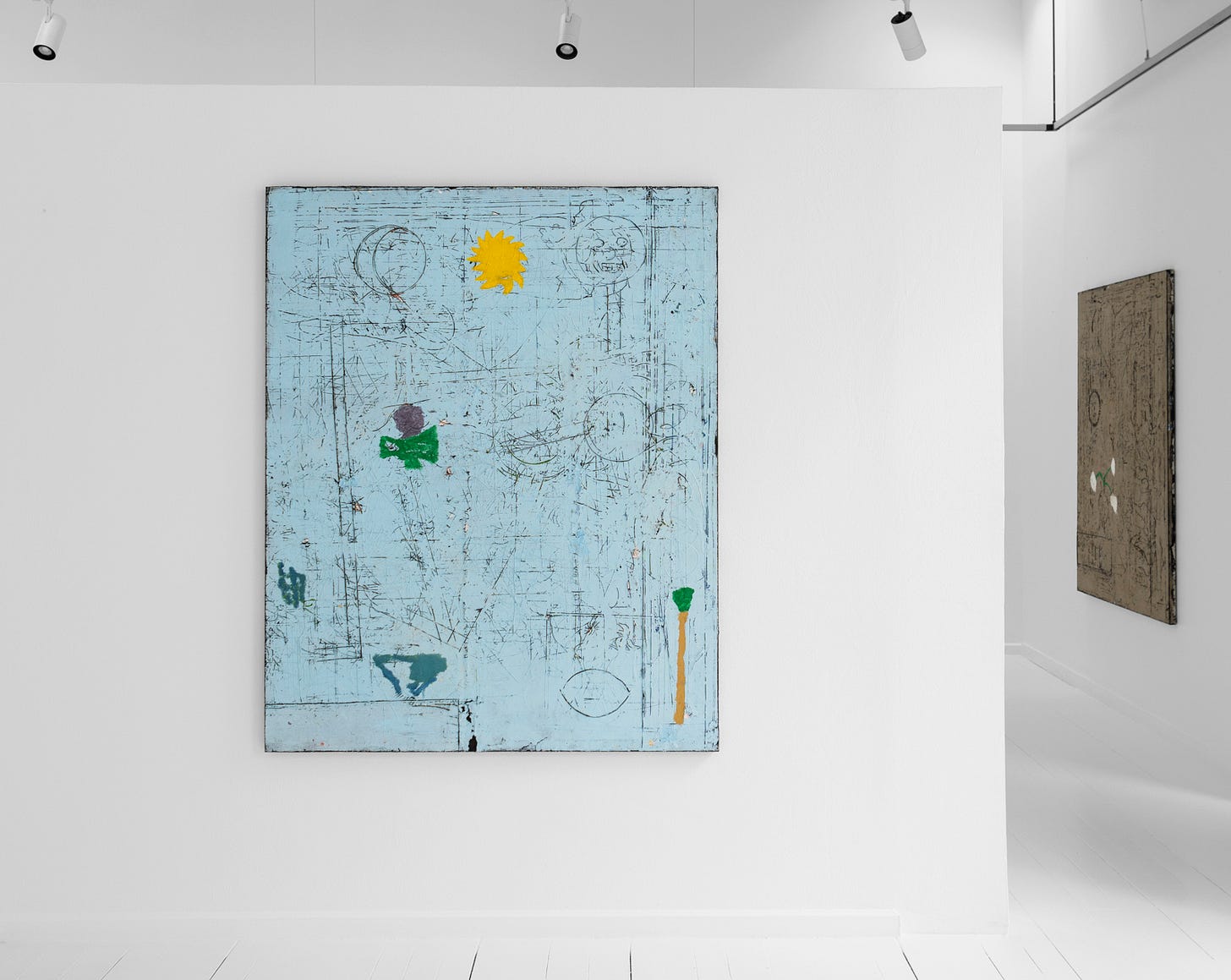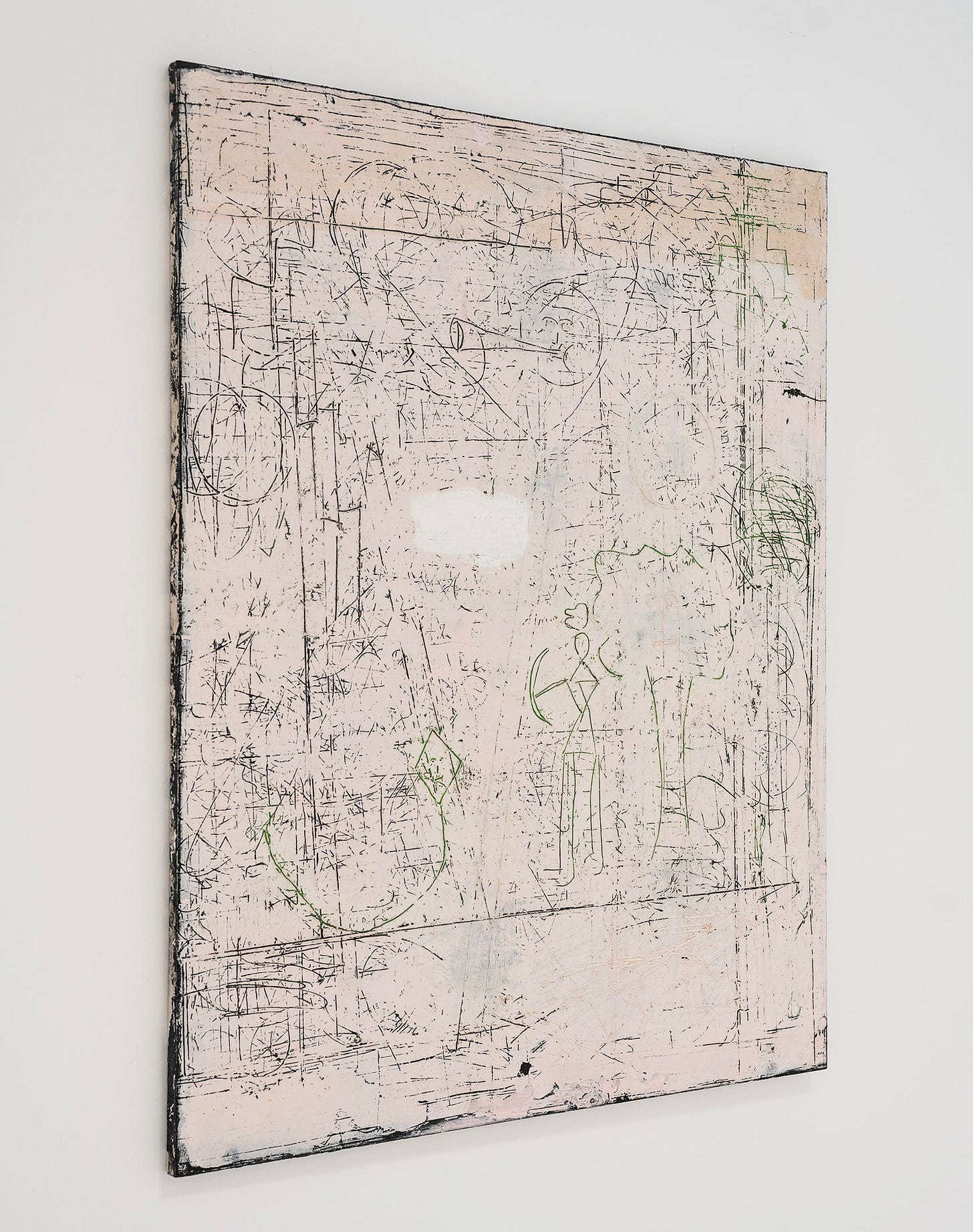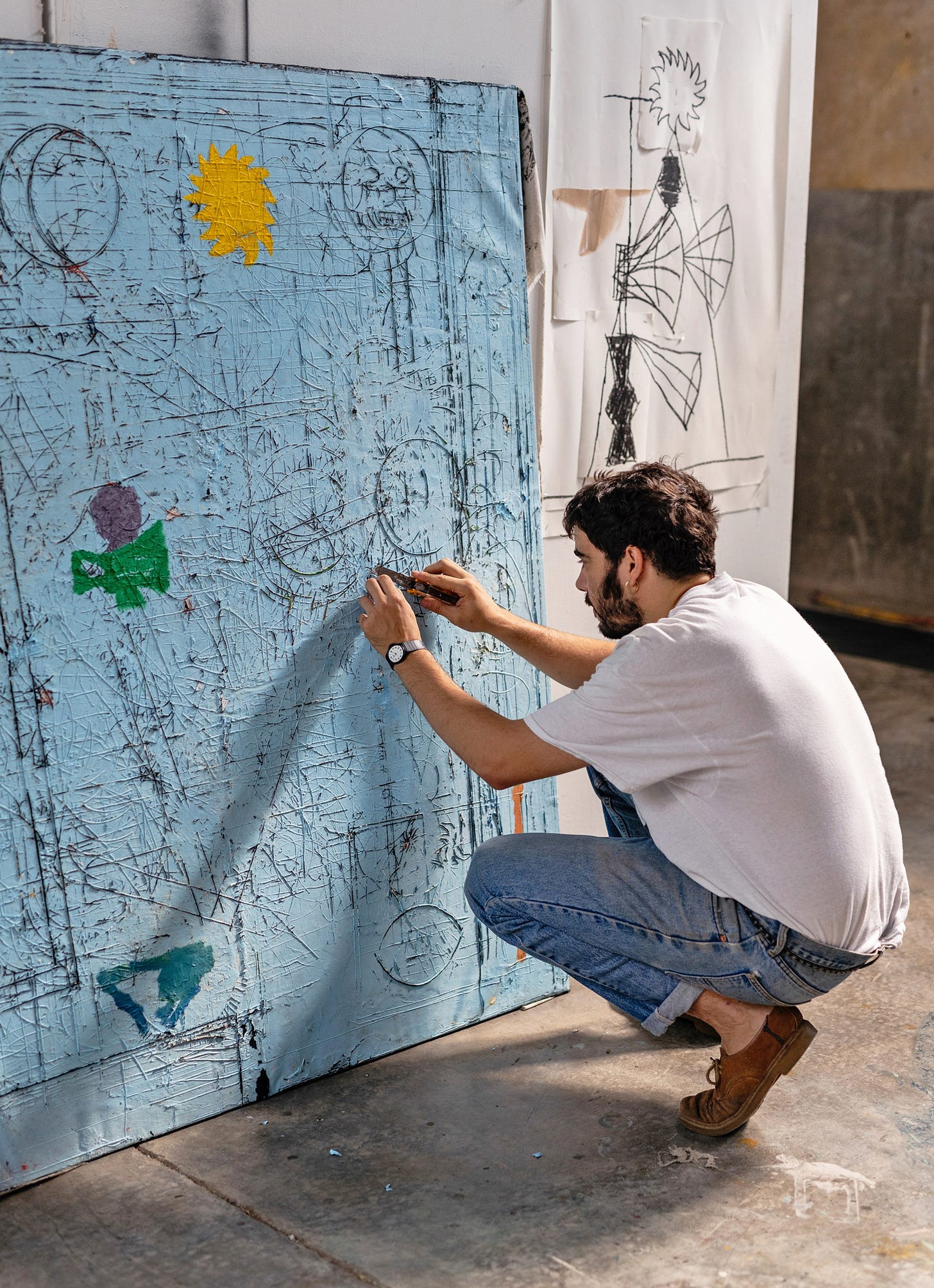I was first drawn to the work of Eloy Arribas because of his unique surfaces, which are scratchy, worn down, and heavily worked into. It feels like Eloy has sliced directly into this surface, like when people carve their names into street walls. I was intrigued not only by the personality of this unique mark-making but the mystery behind it.
I couldn’t figure out Eloy’s process, which looks like one of removal, chipping out bits like a sculptor does with a ball of clay. It also makes me think about the idea of the palimpsest: a partially erased surface that’s worked into while leaving traces of former layers, a history of a process.
While Eloy’s frenzied marks build up into a chaotic whole, he reigns everything in with his restricted colour palette and the charmingly naive figuration that melts into the background. The more I looked at his surfaces the more curious I grew. For all I know, Eloy could have cut out a real street wall and used it as his starting point. Was he working on panel or concrete or canvas? I reached out to the Madrid-based painter to find out.
Hey Eloy. How would you describe your work?
A few years back I started to work on moulds and found a way to use some techniques on surfaces, making paintings. I use the drawings, accidents and debris of each piece to make the next one, establishing an ongoing series I call El Palacio (The Palace) which refers to the kind of architecture called infilate di stanze.
To me, if the whole series is like a song, each painting is one beat of it. I like to think my work is a process-based approach to the idea of rhythm and time, which I’ve been obsessed with ever since I started making music.
It looks like you scratch into your surfaces. What’s your painting process? I saw something about a wax mould and I was intrigued. Can you explain how that works in the paintings?
Although I’ve explained it many times, people never get it at first haha, but the process is really easy. I’m actually not very good with techniques, I just found it one day.
I work on a single wax mould in which I scratch and draw to make a negative drawing/etching. I never erase the previous drawing, so I can use it to be part of the next one, as if you had to walk through every room in a palace without corridors, rather an infinite one. Then I do a strappo on the mould, so I get the positive image, which is the final painting.
Some pieces remind me of chalkboards or street walls, with layers upon layers. What things are you influenced by?
Well my first entry point into being an artist, whatever that means, was to be a graffiti writer, so I suppose I still preserve some of that visual imagery. Also the first painter I liked when I was a child was Cy Twombly, who I discovered by my older sister Cinta Arribas, who is also my first influence.
I like it when paintings are not made by professional artists, but by accidents or natural events that act on surfaces or objects, like vernacular graffiti.
At first I thought your work was purely abstract, but I can now see plants and faces. Can you tell me more about your interest in where the abstract meets real things?
While I was at University I was obsessed with abstraction but I felt unable to make it. I’ve spent years trying to find a way, and after much struggling I’ve convinced myself that I can't understand it hahah. However, I try to work with some figurative images and put them in a noisy place in which they work as signs and icons, and they become part of a rhythmic composition. For me, at this point, figuration in painting is like the lyrics in a song.
I was also wondering about your simple use of colours, which make me focus on the marks more as it’s more subtle. Was that your intention with keeping the colours basic?
You just said it! I started working with just a few colours to preserve the importance of the drawings and marks in the kind of pieces I wanted to make. I wanted to avoid excessive stimulation of my gaze whenever I’m in front of the paintings.
It looks like you’re in Madrid? What’s the art scene like there at the moment? Is there a good community?
Right now I feel like it’s the best moment to come to Madrid. A lot of things are happening, lots of new galleries and artists are emerging, and a super funny scene is growing out of it. I like to live and work in the city. I live in the Carabanchel neighbourhood, which is becoming an interesting place to be - there's a lot of studios and galleries in the area.
Lastly, do you have any shows coming up?
I’m working on a bunch of new paintings to be shown in some group shows in Spain and Europe, but no solo show this season. I’m waiting for that call - galleries from around the world! Meanwhile I’m working on a book with Juan Narowé (who is one of my favourite artists at this moment, and also one of my best friends). But really I’m just working in the studio, which is what makes me happy.
Follow Eloy on Instagram: @eloy.arribas
Things on Our Radar This Week
Our friend Dan Curtis has a brilliant video series called ‘One Artist / One Artwork’
An interesting think piece in Art Review on whether or not you can get too old and jaded for the art world
A brilliant Pace video of Pam Evelyn her the studio that makes you want to paint
The Best Painting Shows in London This Month
Gabriel Hartley at Seventeen Gallery (ends 21 Dec)
Machine Painting at Modern Art EC1 (ends 14 Dec)
Charlotte Winifred Guérard at Palmer Gallery (ends 21 Dec)
Klara Liden at Sadie Coles (ends 15 Feb)
Thanks for reading, see you next time!
Oliver & Kezia xx
Palette Talk is free and we hope to grow with your support. If you’ve enjoyed reading, drop us a donation via PayPal…


